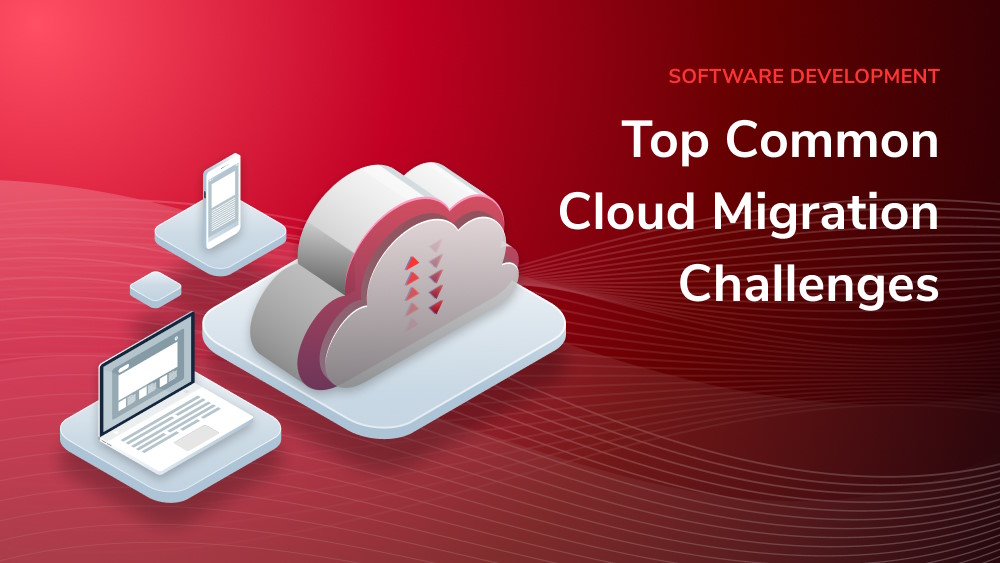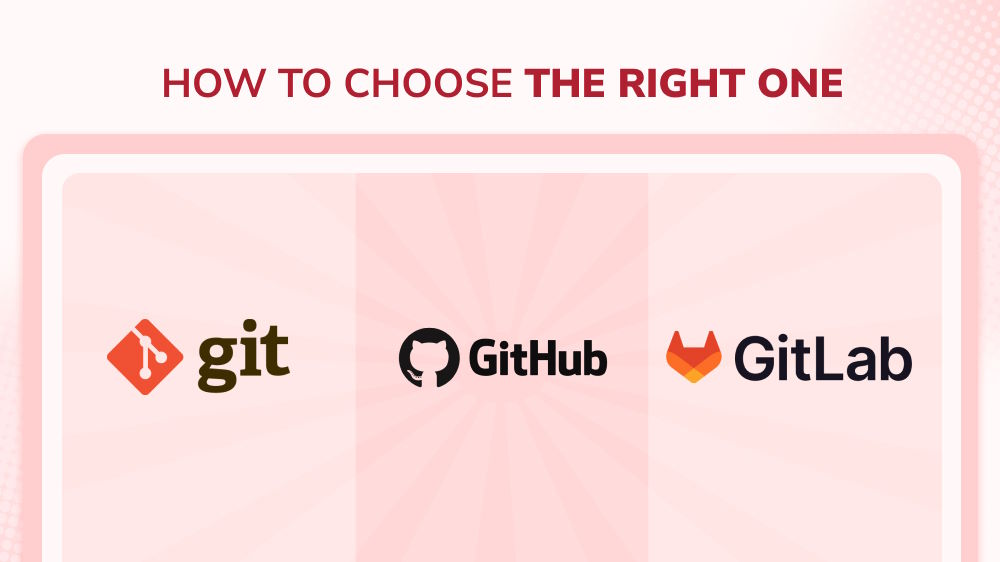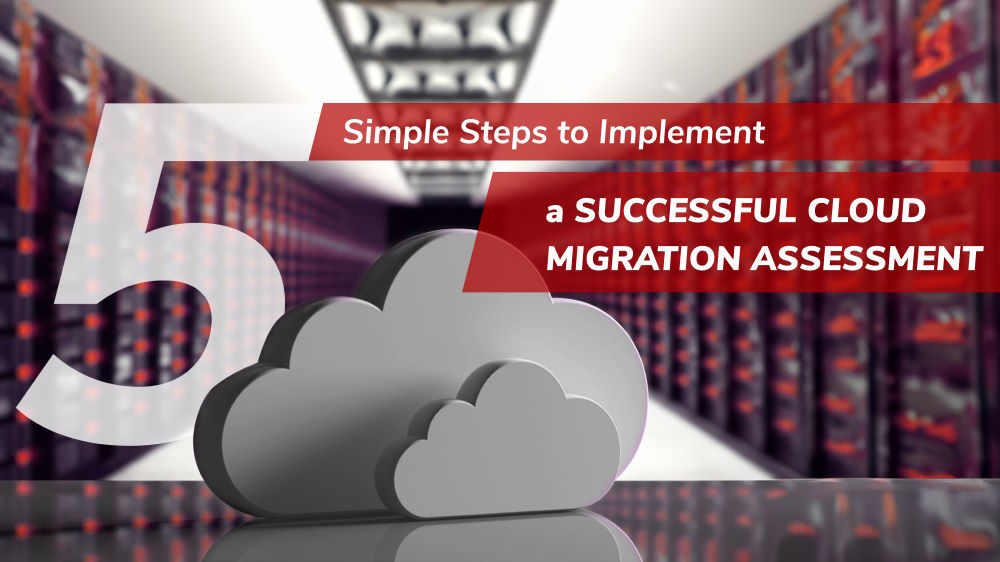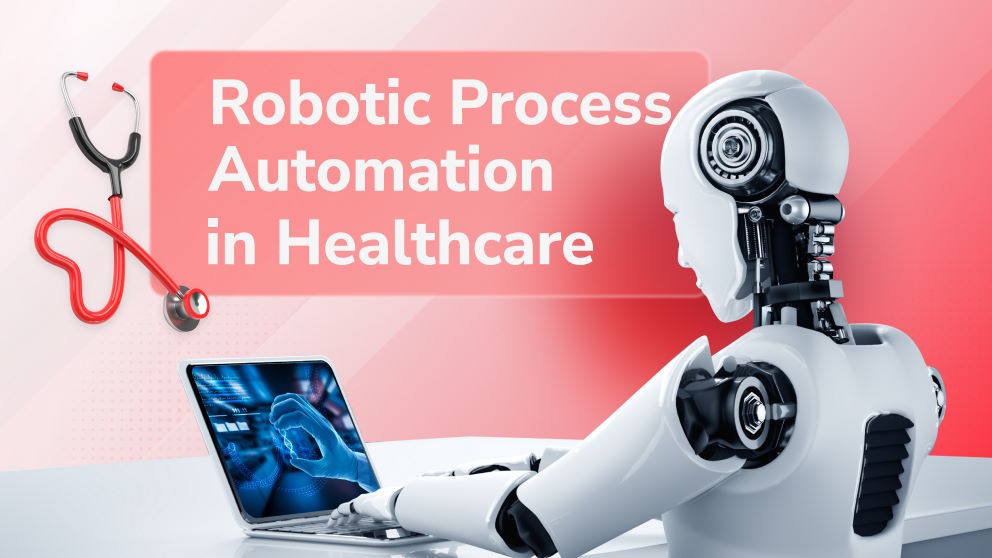Common Cloud Migration Challenges: Ways to Surmount & Mitigate Them

Content Map
More chaptersCloud computing is one of the “potent weapons” used in the race for digital transformation and technology superiority, and it is also a must-go-through “ritual” to get digitalized. So, any business that strives to survive and thrive through the Fourth Industrial Revolution must either embrace cloud technology and migrate its IT infrastructure to cloud-based solutions, or be cast aside.
As reported by Cloudwards, the 2023 Cloud Computing Statistics showcases that 97% of all entrepreneurs utilize some form of cloud solutions, and 48% of businesses are storing their most valuable confidential data in cloud environments.

As a certain result of the rising demand for cloud adoption today, the cloud services and cloud providers are roughly increasing in number and speed. Though many organizations are placing a high degree of trust in cloud solutions and their benefits, the venture to successful cloud migration is implicit with numerous hurdles.
What Is the Cloud Migration Process?
Simple as it seems, cloud migration refers to the process of moving the digital assets of a company (including databases, applications, services, and other IT resources) from on-premises infrastructure to a cloud environment.
By embracing the cloud migration strategy, tech and non-tech companies of any size can take advantage of the scalability, flexibility, and cost-efficiency that cloud computing promises. The cloud migration process typically comprises a number of phases:

Assessment
In the very first stage of the cloud adoption process, you or a cloud provider (in the case when you opt for managed cloud services) will conduct a thorough assessment of the existing data, applications, and IT infrastructure. Following the assessment, a cloud migration plan would be created to indicate which components are suitable for migration and determine the best cloud service provider and deployment model (public cloud, private cloud, or hybrid cloud - e.g., Platform as a Service (PaaS), Infrastructure as a Service (IaaS), and Software as a Service (SaaS), etc.) based on your specific business objectives.
Cloud Strategy Development
After inspecting the current state of your organization’s environment, a detailed cloud migration strategy will be developed by taking into account your business objectives as well as various key factors, such as service level agreements (SLAs), timelines, and costs associated with the migration project. This phase is aimed to pave the way for a smooth and error-free transition of successful cloud migration. This includes selecting the appropriate migration approach, such as “lift and shift”, refactoring, rearchitecting, or rebuilding applications in the cloud computing environment.
Design & Preparation
This phase kick-starts when the migration plan is wholly defined in the previous step. The cloud environment and architecture are designed based on your business requirements. It includes developing a test environment to ensure that all applications perform as expected when moved to the cloud platforms and ensure data security measures are in place (such as creating firewalls and setting up perimeter defense). Also, in this stage, you must prepare your staff for the upcoming transition. This involves addressing any identified gaps or issues, implementing required changes, and ensuring employees are trained on the new cloud skills, technologies, and practices.
Migration Execution & Testing
The core phase of the entire cloud migration process is here. The migration is executed, in which all applications, data, and other IT resources are moved to the target cloud environment. Multiple techniques can be employed for migrating data, such as manual file transfer or automated tools like AWS Database Migration Service (DMS) or Azure Database Migration Service (ADMS). This also involves using data transfer tools, deploying applications on cloud infrastructure, and configuring cloud services to support the migrated resources. Post execution, you must run tests to make sure everything works properly before going live on the new cloud-based environment. This may involve validating performance, functionality, and security to make certain all requirements have been met.
Optimization & Monitoring
Successful cloud adoption does not stop at the end of migration. To ensure that the cloud environment is up and running to its best potential, cloud optimization initiatives must be carried out. This involves monitoring resource utilization and scaling services as needed in order to maximize performance, improve scalability, and enhance cost efficiency. Also, regular checks should be conducted to identify security threats or vulnerabilities in a timely manner.
Ongoing Management
Finally yet importantly, there need to be well-established processes to manage and maintain the cloud resources in the long run. This ranges from staying up to date with the latest software versions, conducting regular backups of data, monitoring system performance, and taking appropriate measures in case of any disruptions or outages. All these activities are essential for keeping your cloud infrastructure stable and secure.
Top Common Cloud Migration Challenges to Watch Out for
Even though cloud migration brings a lot of advantages, and it is also the right move to take, there are still many challenges awaiting you. In order to cope with and overcome cloud migration challenges, it is best to know and fully understand them before embarking on the journey. Here, we outline some of the typical obstacles:

Skill Gap
The first and foremost cloud migration challenge is the lack of skilled personnel to execute the plan. Cloud migration necessitates a diverse set of skills and knowledge in areas such as cloud deployments, data migration, application migration, cloud security, and so forth. Without adequate knowledge and expertise, your cloud migration endeavor will only remain an idea on paper. Thus, it is essential to assess the current skill set of your IT team and detect expertise gaps that need to be filled in order to prepare for commencing cloud migrations.
Most organizations will face this challenge when they start their cloud initiatives. The lack of understanding and awareness in terms of cloud technology can lead to confusion during the implementation process, making it difficult for personnel to handle the complexities of migrating to the cloud. Moreover, the insufficiency of cloud skills and understanding can create various internal roadblocks, such as policy restrictions or resistance from employees due to fear of change - we will discuss this later. Such cloud challenges must be addressed and mitigated beforehand.
In this circumstance, business owners can borrow a hand from external sources of cloud experts to bridge the internal skill gaps. This can be done by engaging a third-party cloud consultancy or through the leveraging of services from public clouds, which commonly come with built-in technical support. There are also many online training courses and certifications available that help to strengthen your team’s cloud proficiency. Ultimately, it is essential for companies to invest in human resources to ensure successful cloud adoption.
Data Security and Compliance Concerns
Obviously, one of the cloud data migration challenges is the risk of security and compliance as the data is being transferred. The risk for data loss or breaches of any kind is high on cloud operations due to the dynamic nature of virtual environments and the increased complexity and mobility offered by cloud solutions. Several steps need to be taken before shifting any sensitive data or confidential information to the cloud platform, such as properly encrypting data, using private VPNs for secure connections, monitoring access control lists (ACLs), etc.
Robust security measures must be in place to ensure compliance with local data privacy regulations and industry standards. Furthermore, companies should be well aware of the service-level agreements that will be provided by the cloud vendor to understand their rights and responsibilities when it comes to managing customer data.
Cost Overruns
This is one of the biggest cloud migration challenges. Before or after putting your hands on the benefits, the cloud migration costs associated with data migration and ongoing operations are your major concerns.
The overall cost of cloud migration can quickly add up when considering the resources needed to manage and maintain your cloud-based infrastructure. This includes additional staffing, software licensing costs, hardware expenses, and other service fees. It is essential to plan out a comprehensive budget before making any significant investments and to consider the long-term expenditure of cloud operations through careful analysis.
Furthermore, it is not only about money but also time and effort. Moving data to the cloud, no matter the size or type can be time-consuming. Therefore, careful planning is a must for not only migrating and securing data in the cloud environment but also cost management.
Cloud Environment Adoption Resistance
One of the challenges of cloud migration – the inner cloud migration resistance – is viewed as the natural reaction of people against something new, especially when it comes to changes, adaptation, and benefits. Moving to the cloud requires internal and external stakeholders, which may involve retaining existing personnel, training new talent, and engaging external vendors. This migration process can be complex for some employees who are not used to the speed of change, are unfamiliar with cloud technology, or are concerned with their job security as well as other issues.
From the perspective of business owners, you should put yourself in the staff’s shoes to understand the reasons behind their resistance, thereby coming up with effective strategies to alleviate any concerns or fears that limit them from embracing the journey to migrate to the cloud.
One of the good ways is to create good chances for your staff to get to know more about the technology, gain technical skills, and eventually embrace the cloud transition. A well-structured training program with clearly defined goals will help employees understand their roles in the migration process, build confidence in themselves and increase their acceptance of the change. This will also ensure that your staff understands the benefits of cloud data migration to not only the organization but also themselves and is fully equipped to make the new cloud environment successful.
Existing IT Infrastructure Complexity
Most companies may pay attention to long-term costs or usability regarding cloud migration but often neglect the complexity of existing IT infrastructure and processes. The more complex your current IT environment is, the more troublesome it will be to migrate smoothly to the cloud.
Effectively moving data and applications from legacy systems or on-premises data centers into a cloud platform entails you having an in-depth understanding of the existing environment and how it works. Knowing your data sources, existing applications, architectures, databases, and other components will help you identify potential issues during the cloud migration process.
Certain complexities must be addressed, such as the different levels of access rights, data replication and synchronization processes, and compatibility of existing applications with cloud-based services.
Moreover, it is necessary to identify the areas where existing IT infrastructure can be optimized or updated prior to migration in order to ensure seamless integration into a new environment. Since legacy systems may not support all features or functions required by cloud-based services, a complete assessment of existing infrastructure must be conducted to identify the necessary changes and ensure no disruptions occur during the transition. In brief, you need to invest extra effort in the planning and preparation stage to facilitate a successful cloud migration.
Vendor Lock-in
This obstacle occurs when the business is tied to a particular cloud vendor. When making the transition, organizations should understand that they may become reliant on a specific vendor’s cloud services for particular resources or applications. Consequently, you become “locked in,” as switching to another provider will require restarting the data migration process.
Therefore, it is essential to consider the long-term implications of cloud migration and determine whether your current vendor can offer the most suitable services for your organization’s needs. One method to avoid getting stuck with a single provider is by using multiple vendors or utilizing hybrid cloud environments that enable an organization to combine public cloud services from different providers with their existing IT infrastructure. By doing this, you can have the flexibility to switch between different providers if needed without having to go through the entire cloud migration process again.
Consult with Orient Software about Your Cloud Migration Strategy

At Orient Software, we understand the importance of cloud migration strategy as well as your concerns about its complexity and the potential risks of tampering with your endeavor. And we know your difficulties in staffing and training your in-house IT team to enforce the transition successfully. Fear not because we are here to offer you professional and personalized support throughout the entire journey of migrating to cloud environments. We guarantee that we have the experience, resources, and expertise to lead you through the cloud adoption adventure with the minimum risks and challenges while acquiring the maximum value and benefits. Get in touch with us today to discuss your needs further and learn more about our cloud-related as well as other IT services.







